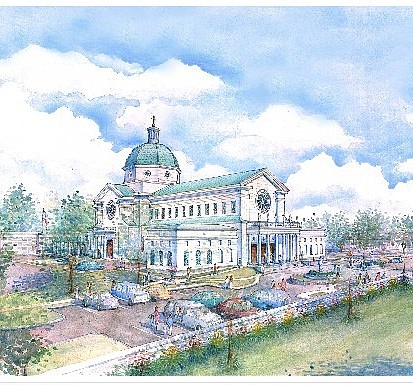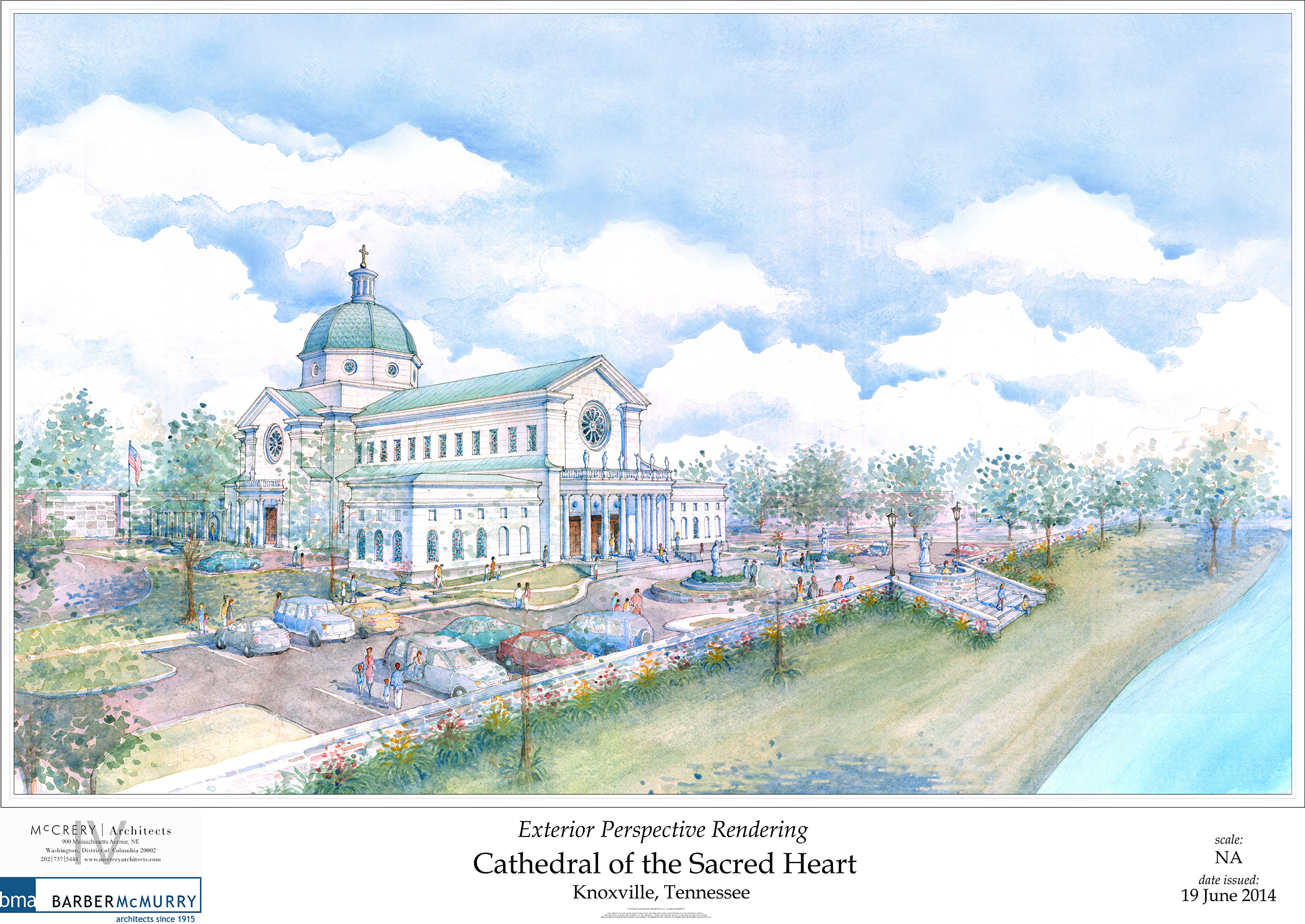A new flagship church for regional Catholics will reflect anything but a poor church.
The Diocese of Knoxville -- the headquarters for some 66,000 East Tennessee Catholics -- has launched a $45 million campaign among all its 50 churches.
All parishes in the diocese, which stretches from Chattanooga to Johnson City, will receive a chunk of the money raised to support local needs. But the crown jewel of the campaign will be a $25 million cathedral to replace the current outdated and undersized cathedral in Knoxville.
Parishioners will be asked to give above regular tithing to meet the $45 million goal -- about $682 per each of the area's 66,000 Catholics.
Each parish will have its own fundraising goal that's based on its individual budget. All 50 churches will be asked to chip in about $4.5 million toward the cathedral, with about $10 million coming from cathedral members and the rest coming from major donors inside and outside the diocese.
The announcement of the fundraising campaign comes as Pope Francis urges Catholic leaders to give up the trappings of the church in favor of a more modest lifestyle. He envisions a poor church for the poor. That's a noticeable shift in tone for a church sometimes known for its opulence -- The Economist estimated in 2012 that American Catholic parishes had revenues of about $11 billion, while the American church gave away an additional $4.7 billion through Catholic Charities.
The pope's example of austerity -- he lives in an apartment rather than the papal palace, for instance -- is having an influence on American bishops and priests. Since Francis took office in March, some bishops have given up their opulent residences amid criticism from lay church members. The Atlanta Archbishop announced in the spring that he would sell his $2.2 million Buckhead home. In March, Pope Francis accepted the resignation of a German bishop, dubbed "Bishop Bling," after he spent more than $40 million on a new home and office complex.
Knoxville Bishop Richard F. Stika has acknowledged the pope's new direction. After hearing concern from parishioners, the proposed cathedral's $38 million budget was pared down to $25 million. And the diocese has committed to setting aside 10 percent of everything it raises for a Pope Francis Charitable Trust Fund that will provide matching grants to local parish-supported charities.
In a letter to parishioners about the campaign, the bishop reiterated the diocese's commitment to the poor. He said the diocese, which provides more than $6 million annually in service to the poor, doesn't have to be an "either/or" organization.
"It is through our worship that we are propelled to serve the less fortunate among us," he said. "Our commitment in service to the poor has been constant throughout the history of our diocese, remains constant today and will be constant in the future."
The Diocese of Knoxville was created in 1988 from churches previously under the umbrella of the Diocese of Nashville. A diocese is a geographic collection of parishes grouped together under the governance of a bishop who serves from a cathedral, the mother church of a diocese. Knoxville's diocese never had a specially created cathedral and instead took form in an already existing parish church that's now more than 50 years old.
The cathedral has local members but also hosts diocese-wide events, like priest ordinations. But officials say it's too small, especially given the church's growth in East Tennessee. In the last 25 years, the diocese has doubled in parishioners and this year was ranked among the top ten in the nation for its rate of adult conversions. The current church, the Sacred Heart of Jesus, will double its capacity from about 500 to 1,000 under the plan.
"The need for the cathedral has been present to the diocese since we were founded," said John Deinhart, the diocese's director of stewardship and strategic planning. "It's the perfect time to do it now. And it's a necessity given the growth of our church."
The capital effort, called the Home campaign, aims at raising $45 million over the next several years. Aside from the $25 million cathedral, the campaign will go toward Catholic education, priest retirements and help fund projects at churches across the diocese.
At least half of the money raised through upcoming pledge drives will stay with local churches, Deinhart said. That's partly in response to results of a survey of 1,000 Catholics that showed many facility needs across the diocese aside from the cathedral.
"I really think the people of Chattanooga are going to get behind this capital campaign. And it's because it's a fruit of the process of listening," said the Rev. David Carter of the Basilica of Saints Peter and Paul in downtown Chattanooga.
With its local funds, the basilica will upgrade its sanctuary space, renovate its religious education building and be able to offset the costs of ongoing repairs to the rectory that hadn't seen major renovations since the 1930s, Carter said. Aside from the needs here, he said, the diocese has long needed more space for its mother church.
"Worship is the primary thing we do," Carter said. "We need space to worship the Lord our God."
And Catholics are not congregationalists. Theologically, the cathedral is the centerpiece of the diocese, said Monsignor Al Humbrecht of Soddy-Daisy's Holy Spirit Catholic Church.
"None of our parishes stand alone," he said. "We are part of a diocesan church, which is part of a national church, which is part of a universal church."
Humbrecht said Holy Spirit hopes to use campaign funds to add a multipurpose building. When the church was built it had about 50 member families. Now it's stretched for space with 400 families.
He said the pope's example is trickling down to clergy members as a constant reminder to be good stewards of parishioners' gifts. Humbrecht, who has previously served twice as Knoxville's interim bishop, said some parishioners were hesitant of the cathedral plan. But they are coming around on the current plan, which is less ornate than the original design.
"I think people are going to be looking at these kinds of campaigns and saying, 'OK, where's the money going?'" he said. "And that's going to be a concern for people."
William Portier, professor of religious studies at Dayton University, said the pope's new direction is changing the game for Catholic bishops worldwide. Many bishops were appointed under Pope Benedict, and some tended to live like princes, he said. Now bishops are operating in a different environment with different priorities, especially when it comes to finances.
"It seems like they have to think twice," Portier said. "He'll just make them think in a different way."
"What Pope Francis is trying to do is change the model from a prince to someone who walks with the people and has the smell of the sheep on him," he said. "And if I were a bishop that would be a challenge to me to figure out how I should do this."
Contact staff writer Kevin Hardy at khardy@timesfreepress.com or 423-757-6249.
Editor's note: Chattanooga Publishing Company President Bruce Hartmann serves as chairman of Sacred Heart Cathedral's fundraising campaign.


